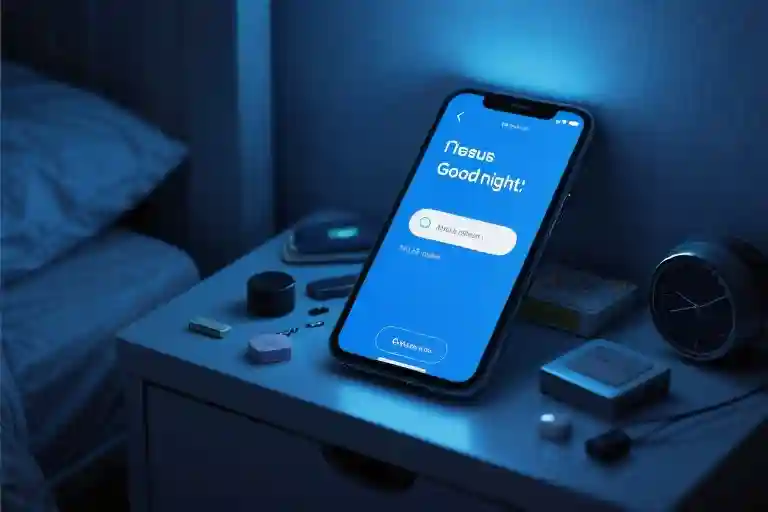The bed feels too large tonight, even with their body lying right beside you. That familiar warmth has turned into a careful distance, measured in inches but spanning miles in your chest. You check your phone again – no morning message today, breaking what was once an unspoken ritual. The silence between you grows louder than any argument ever could.
This is the quiet erosion they never warn you about in love songs. The moment you realize love alone can’t bridge the gap when life starts pulling you in different directions. That terrifying clarity when you whisper ‘I love you’ out of habit, then wonder why the words feel like empty shells.
We’ve built entire cultures around the myth that love conquers all. Romantic comedies end at the wedding ceremony, novels climax with the first kiss, pop songs loop endlessly about the dizzying highs – but who writes ballads about Tuesday night grocery runs with someone who forgot to text back? Where are the anthems for loving someone through their third consecutive week of overtime?
Here’s the uncomfortable truth no one delivers with the engagement ring: Love is the most fragile foundation for any lasting relationship. Not because it’s unimportant, but because it’s fundamentally unstable – a feeling that waxes and wanes like moonlight through your bedroom window. Some nights it floods the room with silver, other nights you strain to see its outline behind the clouds.
The dangerous assumption we make is treating love like a permanent state rather than what it really is – a series of choices that sometimes align with our emotions, and sometimes must defy them. That text you send when you’re exhausted, the laundry you fold despite your annoyance, the appointment you remember when they forget – these are the moments that build something sturdier than butterflies.
When the initial spark dims (as it inevitably will), you’re left with the architecture you’ve constructed together. Too many relationships collapse because they were beautiful tents meant for summer nights, never upgraded to withstand life’s storms. The warmth fades, the walls tremble, and you’re left wondering why love didn’t magically weatherproof your bond.
This isn’t pessimism – it’s liberation. Recognizing love’s fragility allows us to stop demanding it perform miracles. To stop panicking when the giddiness fades, as if its absence signals failure rather than the natural progression of something alive and changing. Most importantly, it frees us to start building the other pillars that will hold your connection upright when love feels shaky.
Why Love Alone Isn’t Enough
The first time I noticed the shift, it came disguised as ordinary Tuesday. My partner’s morning text – the one that used to arrive like clockwork with a coffee cup emoji – simply didn’t appear. By Thursday, I realized we’d gone three days without touching beyond accidental brushings in the hallway. That weekend, lying side by side in bed scrolling through separate phones, the thought hit me: We still love each other. So why does this feel so lonely?
This emotional paradox has biological roots. Neuroscience shows the initial ‘in love’ phase – with its obsessive thoughts and euphoric highs – is chemically driven by dopamine surges that typically last 12-18 months. When those neurotransmitters stabilize, what remains isn’t diminished love, but the natural transition from passionate to companionate bonding. The problem arises when we mistake this biological shift for emotional failure.
Modern storytelling bears partial blame. Romantic comedies end at the proposal. Pop songs freeze love at its most dramatic moments. These narratives create unrealistic expectations that love should perpetually feel like the first six months. In reality, long-term relationships cycle through emotional seasons – some vibrant, some dormant, all valid.
Attachment theory offers further explanation. Our early bonding experiences create subconscious blueprints for how we give and receive love. Someone with an anxious attachment might interpret emotional calm as distance, while an avoidant partner could perceive normal needs as suffocation. These invisible forces shape why two loving people can experience the same relationship so differently.
Cultural myths compound the confusion. The ‘love conquers all’ narrative suggests strong emotion alone should overcome practical incompatibilities. But observe any couple married decades, and you’ll find something beyond romance sustaining them – shared values, mutual respect, hard-won communication skills. These elements form the architecture that allows love to weather life’s storms.
If you’re reading this while mentally cataloguing your own relationship’s faded rituals, here’s the gentle truth: The presence of emotional waves doesn’t indicate absence of love. It signals you’ve moved beyond the fantasy phase into real intimacy’s messy, rewarding work. What feels like losing love might actually be gaining something more substantial – if you know how to recognize it.
The Five Pillars Beyond Love
Love may light the fire, but it takes more than sparks to keep a home warm. That initial intensity we mistake for the entirety of love is merely the kindling—what comes after determines whether the flames will sustain or smolder into ash. Through years of observing relationships that thrive and those that collapse, patterns emerge. The strongest bonds share five foundational pillars that outlast emotional turbulence.
Trust: The Invisible Scaffolding
Security in a relationship doesn’t come from constant reassurance, but from the quiet certainty that your partner’s actions will align with their words. Rebuilding trust resembles repairing antique pottery—the golden seams of repair (the difficult conversations, the kept promises) often make the bond more valuable than its unbroken state. Notice where small consistencies live: when they text saying they’ll be late, when they remember your allergy without reminder. These mundane moments form trust’s bedrock.
Communication: From Weather Reports to Deep Currents
Most couples mistake talking for communicating. The difference lies in moving beyond transactional exchanges (“Who’s picking up the dry cleaning?”) and emotional weather reports (“I’m fine”) into vulnerable depths. Try this shift: replace “You never listen” with “I feel unheard when…” The former attacks, the latter invites. Create rituals—a weekly coffee hour with phones away, or writing three things you couldn’t say aloud to exchange every Sunday night. Words build bridges when given proper scaffolding.
Shared Purpose: North Stars in Stormy Seas
Romantic relationships flounder when they become two separate boats tied together rather than a single vessel with shared direction. Identifying common goals—whether raising emotionally intelligent children, building a sustainable lifestyle, or simply creating a home where both can recharge—transforms “you versus me” into “us versus the problem.” Revisit these visions quarterly; people evolve, and so must their shared compass.
Individuality: The Paradox of Space
Healthy boundaries aren’t walls but breathing room—the distance required to appreciate the view. Partners who maintain separate hobbies, friendships, and occasionally even travels often report stronger connection. It counterintuitively fuels intimacy when each person brings fresh experiences and energy back to the relationship. Observe where you’ve become enmeshed: Do you share all friends? Have secret hobbies you’ve abandoned? Space nurtures longing, and longing nurtures appreciation.
Conflict Alchemy: Turning Arguments into Art
Fights aren’t relationship failures but raw material. The healthiest couples have developed what researchers call “repair mechanisms”—ways to de-escalate and reconnect. Some examples: a safe word to pause heated arguments, adopting a “no problem-solving” rule during venting sessions, or physically holding hands while discussing difficult topics to maintain physiological connection. View conflicts as collaborative puzzles rather than battles to win.
These pillars don’t demand perfection but conscious attention—like tending a garden where different plants need care at different seasons. Some days trust requires watering, other days communication needs pruning. The work never finishes, but it does get easier, and in the doing, you’ll find something more durable than butterflies: roots.
The Burnout Survival Guide
That moment when you stare at your partner’s back in bed and realize you feel lonelier than when you’re actually alone – it’s more common than romantic comedies would have us believe. Relationship burnout doesn’t mean failure; it means you’re navigating the messy reality beyond the honeymoon phase. These tools aren’t about fixing what’s broken, but about rediscovering what made you choose each other in the first place.
The Relationship Health Checklist
Print this, stick it on your fridge, or save it in your notes app. These ten questions cut through the noise when you’re too emotionally fatigued to assess your partnership clearly:
- When was the last time we laughed together until our stomachs hurt? (Not at a TV show, at each other)
- Do we still have at least one conversation per week that surprises me?
- Can I name three current stressors in my partner’s life beyond our relationship?
- If we had unlimited funds tomorrow, would our visions of happiness overlap?
- What’s one small thing my partner did this month that I forgot to acknowledge?
- When conflicts arise, do we tend to attack problems or each other?
- Have we developed any new shared interests since our first year together?
- Do I genuinely look forward to ordinary moments together (grocery runs, laundry folding)?
- What percentage of our physical contact is functional (goodbye pecks) versus spontaneous?
- If our relationship were a garden, what’s thriving versus what needs composting?
Score below 4 yeses? That’s your starting line, not your finish line. The couples therapist I interviewed calls this “creating conscious awareness without self-flagellation.”
Conversation Starters That Don’t Feel Like Therapy Homework
Forget “We need to talk.” These five questions slipped casually into Sunday morning coffee time or post-dinner walks can rebuild bridges:
“What’s something I did this week that made you feel cherished, even if I didn’t realize it?” (Reinforces positive actions)
“If we could magically eliminate one recurring tension in our relationship, which would you pick?” (Identifies pain points without blame)
“What’s a childhood memory that explains why you react the way you do when…?” (Builds empathy around triggers)
“What’s one small adventure we could plan that would feel exciting but not overwhelming?” (Reintroduces novelty)
“When do you feel most connected to me during our daily routines?” (Reveals unnoticed connection points)
Steer clear of these conversation killers:
- “You always/never…” (Global statements trigger defensiveness)
- “My ex used to…” (Comparison is the thief of joy)
- “It’s fine” when your tone says it’s nuclear (Passive aggression builds resentment)
Micro-Moments That Reset the Pattern
Neuroscience shows it takes approximately 42 repetitions to rewire a relationship habit. Start small:
- The 15-Minute Unplugged Walk: No phones, no agenda beyond “Tell me about your weirdest work email today.”
- The Gratitude Post-It: Leave one sticky note weekly with a specific appreciation (“Thanks for doing the school run when I had migraines” beats generic “You’re amazing”)
- The Memory Lane Text: Randomly text a photo of a happy shared moment with “Remember when…?”
- The Non-Sexual Touch Challenge: Seven days of intentional non-sexual physical contact (hand-holding, shoulder rubs) to rebuild physical familiarity
As relationship researcher Dr. Carol Bruess notes: “The couples who thrive aren’t those who never burn out, but those who keep showing up with curiosity rather than certainty.” Your next chapter might not look like the first one – and that’s not failure, that’s growth.
When Love Feels Like Drifting Apart: Stories That Might Help
There’s a particular kind of loneliness that only exists when you’re lying next to someone you love. The silence isn’t comfortable anymore, just heavy. You catch yourself wondering when ‘good morning’ texts became obligatory rather than eager, or why a simple ‘how was your day?’ now feels like emotional labor. If you’ve ever searched ‘why do I feel lonely in a relationship,’ let these stories remind you – transitions don’t always mean endings.
The Gratitude Experiment
Mark almost left after seven years. ‘We weren’t fighting,’ he explains. ‘Just… nothing.’ Then his therapist suggested a seemingly childish exercise: a 30-day gratitude journal where each partner records one specific thing they appreciated about the other that day. ‘Day one, I wrote that she made coffee without being asked. By day fourteen, I noticed how she always laughs at my dumb jokes even when they’re not funny.’ The practice didn’t erase their issues, but it shifted their focus from ‘what’s missing’ to ‘what remains.’ Small appreciations became footholds to climb out of their emotional rut.
The Pause Button
Sarah and Liam’s conflicts followed a predictable script: raised voices, slammed doors, days of icy silence. Their breakthrough came during a particularly petty argument about dishwasher loading. Mid-sentence, Liam suddenly said, ‘Can we pause this for 24 hours?’ That spontaneous timeout became their ‘conflict suspension rule’ – any partner can call a 24-hour break when discussions turn destructive. ‘The space lets us separate the issue from the anger,’ Sarah notes. ‘Now when we resume, we’re problem-solving, not weaponizing words.’ Their fights decreased by nearly 70% within six months.
Questions That Travel Miles
For Priya and Noah, living across time zones meant emotional distance compounded physical separation. Weekly video calls became perfunctory check-ins until they instituted ‘three-layer questions’:
- Surface: ‘Did you eat lunch?’
- Middle: ‘What frustrated you today?’
- Depth: ‘When did you feel most alive this week?’
‘Layer three answers surprised us,’ Noah admits. ‘Hearing her describe watching sparrows battle crumbs outside her office window – that’s intimacy you lose when just exchanging logistics.’ Their current record? A four-hour conversation sparked by ‘What childhood memory smells like safety to you?’
These aren’t fairytale endings. Mark still struggles with emotional availability. Sarah and Liam attend monthly counseling. Priya admits time differences still sting. But their stories reveal something vital: the moments when love feels thinnest often precede its deepest reinventions. What these couples share isn’t perfect harmony, but the willingness to keep rewriting their love story – one awkward conversation, silly journal entry, or vulnerable question at a time.
When Love Isn’t Enough
The bed feels wider these nights, though it’s the same mattress you’ve shared for years. You catch yourself staring at their sleeping face, wondering when the silence between you grew louder than words. That text thread from this morning still glows on your phone – your message read but unanswered, the digital equivalent of a conversation dying mid-sentence.
This is the quiet erosion no one prepares you for – loving someone while simultaneously drowning in the relationship. That persistent ache when you realize love, the thing we’re told conquers all, sometimes doesn’t even conquer Tuesday nights.
Here’s what we rarely acknowledge: Love is the most fragile pillar holding up your relationship. Not because it’s unimportant, but because it’s fundamentally unstable. Like weather, it changes. Some days it’s sunlight warming your skin; other days it’s fog making even familiar paths unclear.
The cultural myth sold to us insists love should be enough. Movies fade to credits as couples kiss, implying decades of effortless happiness. Songs promise that finding ‘the one’ completes life’s equation. But real relationships aren’t arithmetic – they’re messy algebra where variables keep changing.
Consider how we experience love chemically. Those early butterflies? Just dopamine fireworks that biologically cannot sustain forever. The 18-24 month mark when many couples hit their first wall isn’t coincidence – it’s neurochemistry recalibrating. This doesn’t mean love disappears; it means love must evolve or perish.
Worse, our language fails us. ‘Falling’ in love suggests an endpoint, when really we’re perpetually choosing to love. There’s no safety net at the bottom of that fall – just daily decisions to build something sturdy together.
So if not love alone, what actually sustains relationships?
Trust grows when love fluctuates – it’s the bedrock saying ‘I may not feel tender today, but I know we’re safe.’
Communication becomes the bridge over love’s gaps – not just speaking, but the courage to say ‘This distance between us scares me’ instead of scrolling silently.
Shared purpose anchors you when emotions feel like riptides – remembering why you chose this person beyond how they make you feel right now.
Respect for individuality prevents love from becoming possession – space to breathe isn’t rejection, but oxygen keeping the connection alive.
Conflict resilience transforms fights from threats into diagnostics – learning to argue in ways that heal rather than wound.
These pillars don’t replace love; they prevent love from collapsing under life’s weight. Like trees growing stronger through seasons, relationships deepen through weathering changes love alone can’t withstand.
Perhaps we’ve asked the wrong question all along. Instead of ‘Is this love enough?’, try asking: ‘What are we building with this love?’ The answer might surprise you – not an ending, but a beginning.
Your relationship’s weakest pillar could become its strongest foundation. Start with one honest conversation today. When you’re done, ask yourself: Which pillar needs reinforcing most in my relationship? Then begin.





